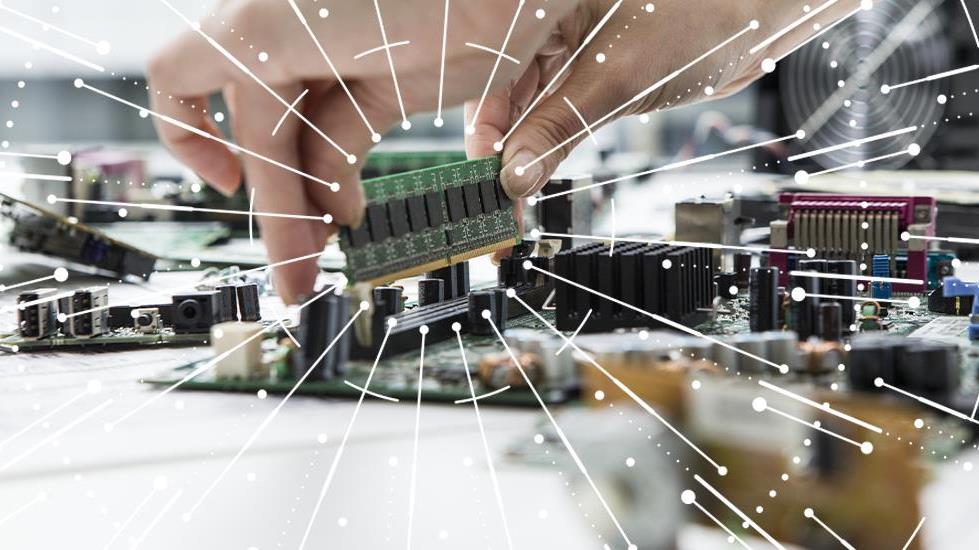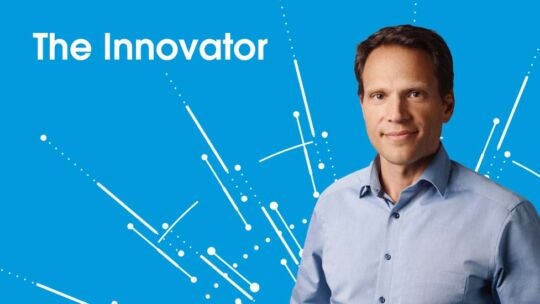
Today, we spotlight our Circular Economy Solutions team to better understand how the organization helps our customers achieve their sustainability goals and realize new revenue streams while advancing a closed, regenerative loop future.

Partnering with customers from a broad set of industries, our circular economy team provides not only traditional repair, refurbishment, and recycling solutions, but also helps market-leading brands extend the life and value of products and curb environmental impact. We sat down with Yuri Takigawa, our Circular Economy Solutions Architect, to learn more about the discipline, how we’re enabling customers to realize their environmental aspirations, and where the industry is headed.
Here is an excerpt from our conversation with Yuri.
So, what exactly does a Circular Economy Solutions Architect do?
My focus is on creating sustainable solutions for existing and new customers. Alongside members of our team, we look at a customer’s business model and create the possibilities of embarking on a circular economy journey together.
We will explore reverse logistics programs, inclusive of repair, harvesting, refurbishing, and associated activities that extends the life of a product, and we also look at ways to increase profitability by enabling circular Product-as-a-Service (PAAS) models.
Correspondingly, we measure circular economy process impacts related to carbon emissions and water and energy consumption, and then help our customers re-think those processes in creative and innovative ways to improve their sustainability outcomes.
I also spend part of my day designing zero-waste solutions. In fact, we are taking a circular economy approach to recycle, repurpose, and extend the life of materials within our own operations, working toward our goal of achieving zero waste in half of our own global manufacturing and logistics sites by 2025.
You have worked on developing effective, beneficial circular economy solutions for 10 years. How have customers’ mindsets changed in that time?
You know, circular economy practices started as an abstract ideal for many. For a long time, it was theoretical from a concept to what could potentially be put into practice one day. Now, the realization of what we can implement has radically changed. We are now an integral part for our customers’ sustainable discussions and journeys. It is remarkable how far the pendulum has swung.

We help our customers re-think circular economy process impacts in creative and innovative ways to improve their sustainability outcomes.
— Yuri Takigawa
Circular Economy Solutions Architect
Flex strives to offer new and innovative circular economy services. One recent such innovation is our circular economy impact calculator. What can you tell us about it?
In 2020, we developed a circular economy impact calculator to help provide a holistic view of each step of our customers’ product lifecycle. It measures, determines, and reports the environmental impact of our customers’ products, packaging, and forward and reverse supply chains.
Additionally, it quantifies impacts based on CO2, energy, water, e-waste, and resource inputs. While many lifecycle assessment (LCA) tools measure the overall impact of a product, they lack a focus on circular activities. By contrast, the circular economy impact calculator looks at circular economy activities and associated impacts across the entire product lifecycle.
Creating the circular economy impact calculator has been deeply beneficial for Flex and our customers. Based on our customers’ goals, we are able to present a variety of solutions along with related results for repair and refurbishments. Our customers can directly see CO2 savings, which helps better inform how we rethink entire processes, together.
For example, one of our existing customers in the Lifestyle space turned to us to explore circular economy options for a product line. We were able to use product lifecycle details to help our customer visualize the financial value of recovery activities and associated CO2 savings by using the calculator. Ultimately, with the assistance of the calculator and our circular economy solutions, we calculated an avoidance of nearly 1,700 tonnes in CO2 emissions through the introduction of a parts harvesting program.
What are some specific trends you are seeing with our customers?
Our customers are increasingly looking for innovative solutions that embed some kind of circular economy approach — with a focus on how to mitigate or minimize their CO2 emission via reuse, repair, harvesting, or recycling strategies.
Another trend we are seeing is in lifecycle assessments. We are not calculating just environmental aspects but also economic and social aspects together as a whole. As a result, our customers are now re-evaluating their entire manufacturing and component production processes based on CO2, energy, and water consumption.
What is one surprising thing you have learned in 10 years of developing circular economy solutions?
That the market is incredibly intelligent, responsive, and fast. And, that we need to move at a similar speed in order to best partner with our customers. Given how dynamic this space is, we continuously work to stay apprised of circular economy best practices, helping us to anticipate the needs of our customers and continue to strengthen our capabilities.
You are of Japanese descent, but have also lived in Brazil, the U.K., and now Budapest. How have your experiences shaped your sustainability views?
My experience living in different countries and cultures has made me think more broadly about how we care for one another, and the planet.
For example, I lived in Japan where there is an established sustainability ethos. In school, we learned the value of organization and teamwork for the common good. We also learned how to cook and not waste food, a zero waste tenet. And within communal cleaning, everyone did their fair share and kept things organized. It was very similar to the lean manufacturing principles that we employ.
Lastly, what are you most excited about in the circular economy space or more broadly sustainability?
A circular economy and sustainability will always bring new challenges. As we look to the future, I am as excited as I have ever been to help our customers problem solve, innovate, and excel in the face of those challenges. There is incredible joy in implementing beneficial solutions and witnessing our customers’ successes.



